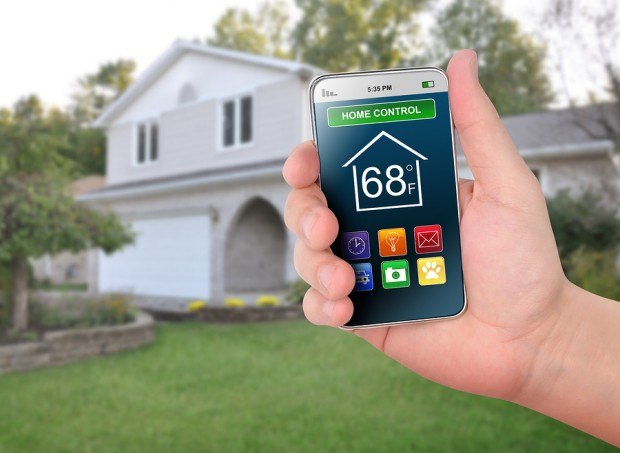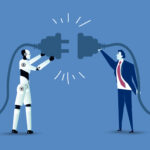The Internet of Things is quickly becoming the Internet of Everything. Whether it’s a sensor in a baby’s diaper to alert parents that the babysitter got lazy, a hotel key that activates the room air conditioning and electricity, or a medical bracelet that tracks heart rate and shares ongoing reports with the doctor, networked connections of people and things are changing our lives.
Executive Summary
For OneBeacon Technology Insurance, insuring the emerging connections of the Internet of Everything means personally meeting with the innovators who are developing new technology to understand the underlying science and sharing insights about risks before moving ahead to provide risk transfer solutions, according to President John Wurzler.For the creators of these apps and makers of these devices, associated security and product liability risks are slowly emerging. While some of these innovations create opportunities for insurers, underwriters most familiar with this new technology are reluctant to write every cool idea that comes along without careful due diligence.
Consider these potential scenarios:
- A smartphone app allows a homeowner to unlock the door without a key. What happens if the phone is stolen?
- A hacker reprograms a GPS device to send the driver to a wrong address.
- A medical device remotely tracking someone’s heart rate fails to send an alert to the attending physician when the patient is in ventricular fibrillation or V-fib.
At OneBeacon Technology Insurance, helping these technology developers understand the potential risks and providing advice and tools to mitigate their exposures is the first step in positioning our company to offer coverage for everything—or many things—within the Internet of Everything.
What exactly is the Internet of Everything?
The term “Internet of Things” was first coined by Kevin Ashton to describe a system where the Internet is connected to the physical world via ubiquitous sensors.
Essentially it encompasses machine-to-machine communications that automate routine to complex activities, and often with imbedded tracking or reporting capabilities.
Given the expansion of the technology, the term has recently been rephrased to the “Internet of Everything.” The Internet of Everything presents an exciting area of economic and consumer opportunity, yet with an abundance of new exposures and science for insurers to comprehend.
Understanding the Risks
Within this product category, risks generally relate to failure or misuse—whether intentional or unintentional.
We consider it a win when companies involved in creating the Internet of Everything resources call on OneBeacon Technology to examine the science and the company, even before considering us for risk transfer.
This deep collaboration helps these innovators bring less volatile products to market while helping insurers gain deeper insights about this emerging segment of the technology industry.
Some recent examples of risks we’ve considered illustrate this approach.
1. A wireless thermostat company has developed tools to control a home’s environment remotely via smartphones.
Services include controlling the thermostat, turning lights on and off, closing or opening window blinds, and more.
We spent time on site with the customer understanding the science behind the system’s sensor technology and its wireless components as well as their integrated approach to robust imbedded security. We shared our observations and concerns to assist the management team in understanding their risks.
These insights enabled us to provide the company with insurance solutions that addressed their business and professional exposures.
2. Doors that unlock as you approach.
This pending product rollout offers an electronic lock that may be synched with a companion smartphone application to unlock itself when the smartphone—and the property owner— enters the activation range and locks as the smartphone leaves the area.
So what happens if the smartphone is stolen? Who is liable, and what is the extent of the potential damages?
Discussing these matters alerted the company to their required risk management solutions, which may not be fully developed yet but should be in place when the product is rolled out.
3. Medical devices are an exciting and potential lifesaving opportunity for the Internet of Everything.
An example is a communications company focused on medical device connectivity and data management that empowers medical device manufacturers to deliver wireless medical data quickly and easily to those who need it. Led by an experienced management team, they have succeeded in obtaining approval as a Class I device from the Food and Drug Administration.
Yet, when this opportunity was presented, there was insufficient time to properly underwrite the exposures as presented, nor time to meet with the company directly.
This exciting opportunity would benefit from a deeper analysis including risk control and information security specialists. The science is certainly interesting, yet the security issues need to be thoroughly vetted.
Benefits Outweigh Risks
For society, the Internet of Everything has benefits too numerous to mention here. And importantly, there are many risk management tools that can help insurers better understand the risks they consider.
How about cars that remember driving speeds and habits and report them to the underwriters?
As with any new use of technology, however, the early adaptors will need to prove that their sensor-driven business model creates superior value. As with all new science and technology, the underwriters need to understand the exposures that tag along. It is not always evident or apparent what those exposures might entail.
Keeping an open mind and having a thirst for understanding new ideas and concepts is part of what drives successful underwriting and reflects our style at OneBeacon Technology. Learning is just a part of what we do. Understanding is what we strive for, and finding a solution is our biggest challenge.
Technology underwriting is a journey: First, there is an opportunity to help with the science; then true collaboration to fully understand the risks and develop a properly structured insurance solution; and, ultimately, insurers can uniquely help to deliver long-term benefits to all involved.
The Internet of Everything is the art of the possible at its finest—and OneBeacon Technology is excited to be at the forefront.





















 E&S Property In Focus: Competition Up, Price Momentum Waning
E&S Property In Focus: Competition Up, Price Momentum Waning  Study: Average Cyber Breach Insurance Coverage Gap is 350%
Study: Average Cyber Breach Insurance Coverage Gap is 350%  P/C Insurance Execs, Underwriters Out of Sync on Advanced Tech
P/C Insurance Execs, Underwriters Out of Sync on Advanced Tech  Progressive Gains as Drivers Shop Around for Auto Insurance—Again
Progressive Gains as Drivers Shop Around for Auto Insurance—Again 



















